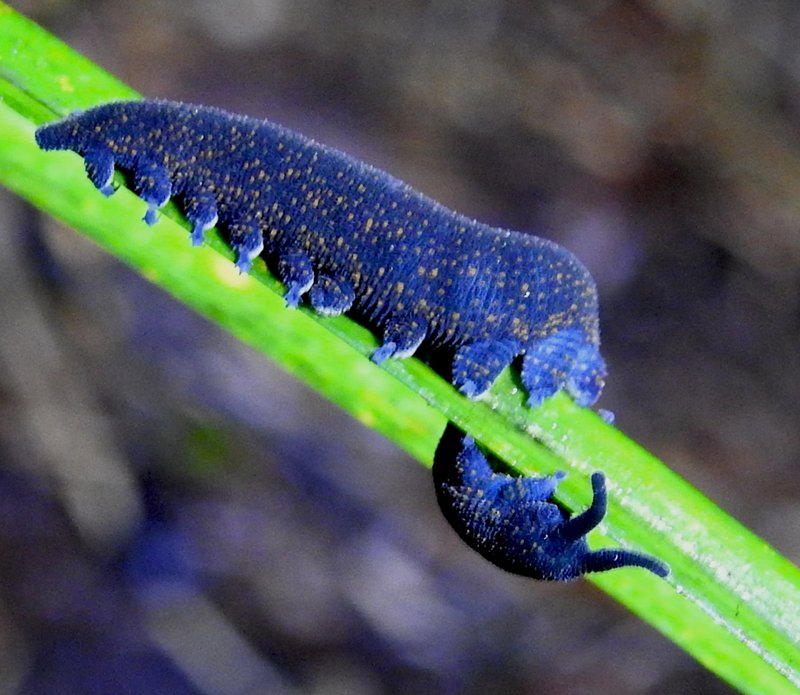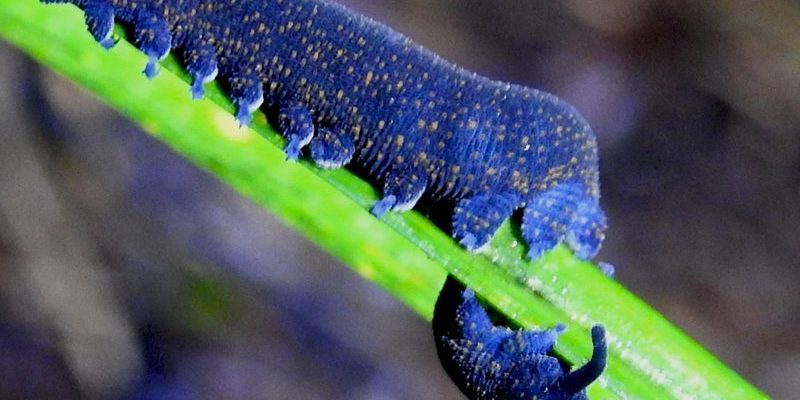
Think of velvet worms as nature’s quirky little secret agents. They move slowly, almost slinkily, through their environments, using their soft bodies to navigate through leaf litter and damp environments. Learning to identify them is not just for scientists; it can be a fun hobby for anyone curious about the natural world. In this guide, we’ll dive into the world of velvet worms and discuss how their colors, patterns, and sizes can help you spot them in the wild.
What Are Velvet Worms?
Velvet worms, or *Peripatus*, are ancient arthropods that live in moist habitats, primarily found in tropical and subtropical regions. They have soft, segmented bodies covered in a velvety texture, which gives them their name. About 300 species exist, varying widely in appearance and habitat preference. Watching these creatures is like witnessing a living fossil—they’ve been around for millions of years!
These creatures are known for their remarkable hunting skills. They produce a sticky slime to capture prey, which mainly consists of small insects. This method is not only effective but also helps keep them safe from predators. You might be wondering how all these features help in identifying them. Well, colors and patterns play a significant role, as we’ll see next!
The Color Spectrum of Velvet Worms
Velvet worms come in a range of vibrant colors, from deep blues to earthy browns, and even striking reds! Color variations often depend on their environment. For instance, those living in mossy forests might be green or brown to blend in with their surroundings. In contrast, others in more open terrains might sport brighter hues to stand out or signal their readiness for mating.
Here’s a fun fact: some species can even change color slightly as they age! This means that a velvet worm you spot in one shade today might look a little different tomorrow. Isn’t that cool? When identifying them, pay close attention to their coloring, as it can offer clues about their habitat and diet.
Patterns: Nature’s Artwork
Beyond their colors, velvet worms often feature distinct patterns. These can include spots, stripes, or even marbling across their bodies. Patterns aren’t just for aesthetics; they serve practical purposes too. Camouflage is a big player here. Patterns can help them blend into their environments, making it harder for predators to spot them.
If you look closely at a velvet worm, you might notice that their patterns can vary even among individuals of the same species. Some might be dotted, while others have linear markings, which adds an exciting layer of complexity to identification. Imagine trying to match different patterns—it’s like a game of hide and seek with nature!
Size Matters: What to Expect
When it comes to size, velvet worms can range dramatically. Most are between 2.5 to 15 centimeters long. However, size can be influenced by factors like species and environmental conditions. For instance, those living in drier conditions tend to be smaller than their counterparts thriving in humid environments.
Identifying the size of a velvet worm not only helps in species recognition but also informs you about its habitat. A larger worm might indicate a well-nourished environment, while a smaller one could mean limited resources. Just imagine spotting a tiny one creeping through a leaf litter—how cool would that be?
Comparing Velvet Worms With Similar Species
You might wonder how to distinguish velvet worms from other similar-looking creatures. For example, they can be confused with caterpillars or slugs due to their elongated shapes. However, unlike caterpillars, velvet worms have soft bodies and distinct legs—usually 14 to 43 pairs! They also lack the hard shell found in many slugs. Recognizing these differences is essential for proper identification.
Another important point is their movement. Velvet worms move in a unique, fluid manner, using their legs to crawl. Caterpillars, on the other hand, exhibit a more inching motion, while slugs glide smoothly but lack the segmented body structure of velvet worms. Knowing these characteristics can make identifying these creatures much easier.
Habitat Preferences of Velvet Worms
Understanding where velvet worms live can also aid in their identification. They predominantly thrive in humid, sheltered environments—think damp forests, under logs, or in leaf litter. They prefer the cool shade of these habitats, which offer protection from predators and maintain their moisture levels.
If you’re on the lookout for velvet worms, your best bet is to explore the forest floor after a rainfall. That’s when they’re likely to be active—coming out to hunt or mate. Keep in mind that they are nocturnal, so your best chance to spot them is during the evening or early morning, adding an element of adventure to your search!
How to Observe Velvet Worms Safely
If you decide to go on a velvet worm adventure, remember to observe them safely. Avoid disturbing their natural habitats, and if you do handle them, be gentle. Their soft bodies are sensitive, and rough handling can harm them. Plus, it’s essential to appreciate their role in the ecosystem—such as pest control and maintaining soil health.
Take a moment to watch them in their natural environment. Bring a notebook to jot down observations about their colors, patterns, and behaviors for better identification later. It’s like being a nature detective, piecing together clues about these fascinating creatures!
Why Identifying Velvet Worms Matters
You might be asking yourself, “Why should I care about identifying velvet worms?” Understanding more about them contributes to biodiversity knowledge. Velvet worms are often overlooked, yet they play a crucial role in their ecosystems. By learning to identify them, you contribute to wildlife appreciation and conservation efforts.
Moreover, studying these unique creatures can provide insights into evolutionary biology. Their ancient lineage helps scientists understand how life has adapted over millions of years, connecting the past to the present. Each encounter with a velvet worm enriches our understanding of life on Earth.
In conclusion, identifying velvet worms can be an exciting adventure that deepens your appreciation for the natural world. From their striking colors and unique patterns to their varying sizes and habitats, these creatures are worth getting to know. Whether you’re a budding nature enthusiast or just curious about the world around you, spotting a velvet worm can be a small, delightful discovery. So, next time you venture outdoors, keep an eye out for these velvety wonders!

